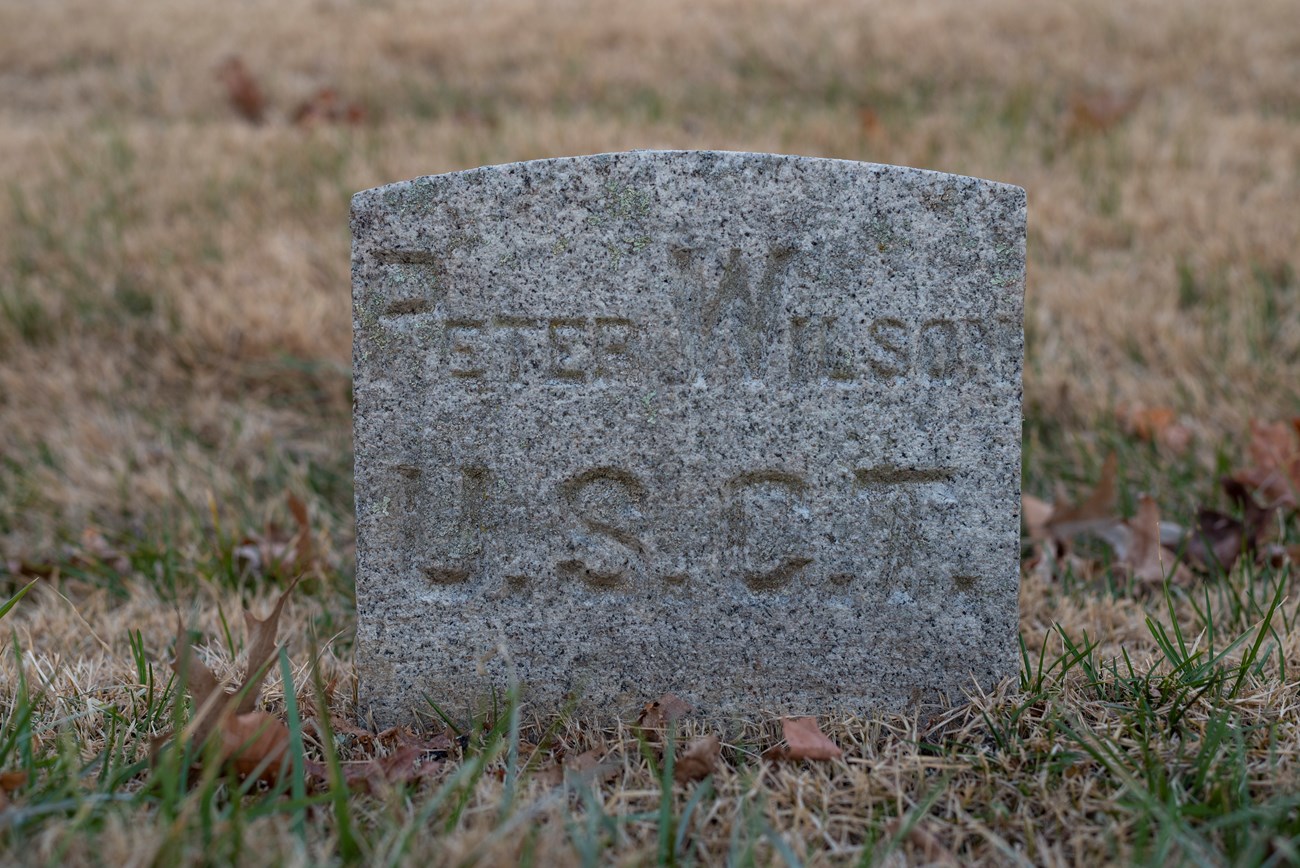Last updated: December 31, 2022
Article
Peter Wilson

NPS Photo
Grave #814 in the Fredericksburg National Cemetery belongs to Private Peter Wilson. Wilson was born in 1829 in Bertie, North Carolina. He enlisted in Company C of the 36th United States Colored Troops on July 13th, 1863 in Plymouth, North Carolina. Prior to his enlistment, Wilson was enslaved by Dr. Turner Wilson. Dr. Wilson owned thirty-two slaves to work his 2,500 acres of farmland; according to cemetery records, Peter Wilson listed his pre-war occupation as “farmer.” Peter Wilson was one of many enslaved people who escaped to Union lines and enlisted in the U.S. Army during the Civil War.1
The 36th USCT Regiment (originally the 2nd North Carolina) was a regiment made up of formerly enslaved men from southeastern Virginia and North Carolina. In February of 1864, the 36th was sent to Point Lookout, a prison camp located on the coast of Maryland, to act as prison guards. Between April and June of 1864, the regiment’s colonel, Alonzo Draper, took his men on four raids into the Northern Neck of Virginia. The regiment fought in a number of skirmishes against Confederate soldiers and local militia units; the 36th had immense success in their endeavors but faced serious backlash from the War Department and from white citizens in Virginia.2
On June 11, 1864, Draper led 475 of his men on an expedition from Point Lookout into Westmoreland County, Virginia. He was accompanied by forty-nine men of the 2nd and 5th U.S. Cavalry Regiments. On June 16th, Draper’s force engaged with 150 Confederate cavalry troopers and 450 local militiamen. Peter Wilson and two other soldiers (belonging to Company C) broke off from their column against the orders of Colonel Draper. They approached a house located a mile from where the skirmish was taking place and fired on a group of mounted militiamen. It is possible that they were attempting to rescue the enslaved people there.3

According to a correspondent writing for the American & Commercial Advertiser, “the Rebels ran down a negro soldier and a contraband, both of whom were murdered in cold blood, the men seeing them shot at after they fell, and their bodies were found riddled with balls.” The soldier was thirty-seven-year-old Private Wilson. The unknown enslaved man, or “contraband,” was likely trying to escape with him. Wilson’s comrade, Private Henry Lee, was “wounded and probably killed, as he crawled into the woods and could not afterwards be found.” The third soldier escaped.4
Draper’s column continued to fight into the next day on June 17. A member of the 36th located Wilson’s body and noted that he had “bullet holes through both feet.” That morning, “plantation negroes” reported that the Confederates had received reinforcements during the night (presumably members of General Wade Hampton’s 9th Virginia Cavalry). After a successful fight that eventually routed the Confederates, Draper’s force returned to Point Lookout on June 21 with 335 head of cattle, 160 horses and mules, and a large number of agricultural tools for two contraband camps located close to the Confederate prison. According to Colonel Draper, the expedition also returned with 600 enslaved people, sixty to seventy of which enlisted in the U.S. Army.5
Private Wilson and the unidentified enslaved man, “who it appears was attempting to get within our lines with the negro soldier,” were later found and buried near the site of the skirmish in Richmond County, Virginia. After the war, Wilson was reinterred in the Fredericksburg National Cemetery.6
